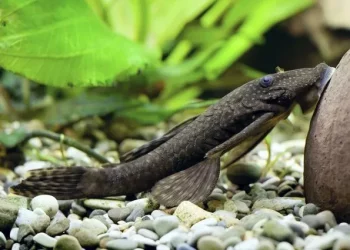Australian lungfish (Neoceratodus forsteri) are a rare and ancient species of fish native to Australia. These fascinating creatures are one of the world’s oldest freshwater fish species, with a lineage dating back over 380 million years. In this article, we will explore the unique characteristics of the Australian lungfish and their status as a rare species.
Overview of Australian Lungfish
The Australian lungfish is an unusual fish species with several unique features. For starters, they have the ability to breathe air using a primitive lung, as well as through their gills. This is a useful adaptation for the fish as it allows them to survive in stagnant or low-oxygenated water. They are also known for their elongated bodies and small dorsal and anal fins. Adult lungfish can grow up to 1.5 meters (5 feet) long and can weigh up to 40 kilograms (88 pounds).
Habitat and Distribution
Australian lungfish are native to the rivers of the Mary and Burnett basins in southern Queensland, Australia. They are also found in the Brisbane River, as well as the nearby lagoons and waterholes. The species is considered to be vulnerable and is listed as a protected species under Australian law. Their habitat is under threat due to habitat loss and fragmentation, water pollution, and climate change.
Conservation Status
The Australian lungfish is classified as “vulnerable” on the International Union for Conservation of Nature (IUCN) Red List. They are also listed as a protected species under the Queensland Nature Conservation Act 1992, which makes it illegal to catch, harm, or trade in Australian lungfish without a permit. Due to their rarity and unique characteristics, they are highly prized by collectors, but it is important to protect them from overfishing or illegal harvesting.
Breeding and Reproduction
The breeding and reproduction of Australian lungfish is unique among fish species. They are one of the few fish species that are capable of producing both eggs and live young. Mating usually occurs between June and September, and the eggs are laid in a nest built by the male. The eggs are then fertilized by the male, who guards the nest and the hatchlings. The fry emerge from the eggs after about 100 days, and the juvenile lungfish have external gills and are about 3 cm long.
In conclusion, the Australian lungfish is a rare and fascinating species of fish that is native to the rivers of southern Queensland. They are unique in their ability to breathe air and survive in low-oxygenated water, and their elongated bodies and small dorsal and anal fins set them apart from other fish species. It is important to protect this species from overfishing, illegal harvesting, and habitat loss, to ensure that they remain a part of Australia’s unique biodiversity for generations to come.


























